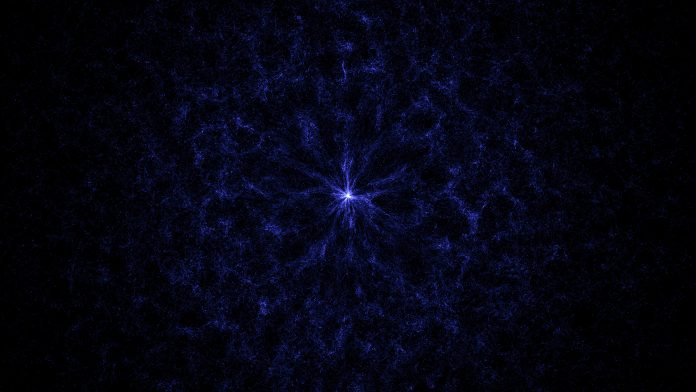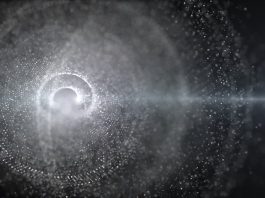In the search for dark matter, a team of scientists has used the COSY particle accelerator to detect axions – what dark matter is proposed to be made up of.
Scientists have been searching for dark matter in a new experiment led by the international JEDI (Jülich Electric Dipole moment Investigations) collaboration.
Utilising the COSY particle accelerator, the team used the spins of particles to detect the axions.
This new method, published in the paper ‘First Search for Axionlike Particles in a Storage Ring Using a Polarised Deuteron Beam,’ is set to establish a promising approach in the search for dark matter.
What is dark matter?
Approximately 80% of the matter in the Universe consists of an unknown and invisible substance – dark matter.
Dark matter was postulated around 90 years ago to reconcile the velocity distribution of visible matter within galaxies.
“A ‘dark’ form of matter, previously unobserved, must additionally stabilise the galaxies,” stated Jörg Pretz, one of the study’s co-authors, who is also deputy director at Forschungszentrum Jülich’s Nuclear Physics Institute and professor at RWTH Aachen University.
Why has no one succeeded in the search for dark matter?
The search for dark matter has been occurring since the 1930s. Despite a vast array of theories, no one has yet succeeded in detecting dark matter.
“This is because the nature of dark matter is still completely unclear,” said Dr Volker Hejny, who is also from Jülich’s Nuclear Physics Institute and, like Pretz, is a member of the international JEDI.
“Dark matter is not visible and has so far only revealed itself indirectly through its gravity. Its effect is comparatively tiny, which is why it only really becomes apparent in the case of enormously large masses – such as entire galaxies,” Hejny continued.
What is dark matter composed of?
Over the years, there have been many theories that hypothesise a number of elementary particles that could make up dark matter.
Depending on the particles’ properties, different methods can be used to detect them. These methods do not require the complex detection of gravitational effects.
The methods include axions or axion-like particles.
“Originally, axions were intended to solve a problem in the theory of the strong interaction of quantum chromodynamics,” explained Pretz.
“The name axion can be traced back to the winner of the Nobel Prize in Physics, Frank Wilczek, and refers to a brand of detergent: the existence of the particles was supposed to ‘clean up’ the theory of physics, so to speak.”
How are axions detected?
To detect the axions, the JEDI collaboration used the spins of particles.

“Spin is a unique property of quantum mechanics that makes particles behave like small bar magnets,” explained Hejny.
“This property is utilised, for example, in medical imaging for magnetic resonance imaging, or MRI for short. As part of this process, the spins of atomic nuclei are excited by strong external magnetic fields.”
MRI technology is used to search for dark matter
MRI technology is also used in the search for dark matter.
In a normal MRI, atoms are at rest. In an accelerator, however, the particles move almost at the speed of light.
Examinations in some areas are therefore much more sensitive and the measurements are more accurate.
The scientists utilised polarised beams
In their experiment, the JEDI scientists took advantage of a special feature of the Jülich particle accelerator COSY – the use of polarised beams.
“In a conventional particle beam, the spins of the particles point in random directions,” said Pretz. “In a polarised particle beam, however, the spins are aligned in one direction.”
Only a few accelerators around the world have this capability.
If a background of axions surrounds us – as the scientists expect – this would influence the motion of the spins. This could ultimately be detected in the experiment.
However, the anticipated effect is tiny and not accurate enough.
Although the JEDI experiment has not yet succeeded in the search for dark matter, the team has narrowed down the possible interaction effect.
More significantly, the team has established a new and promising method in the search for dark matter.





